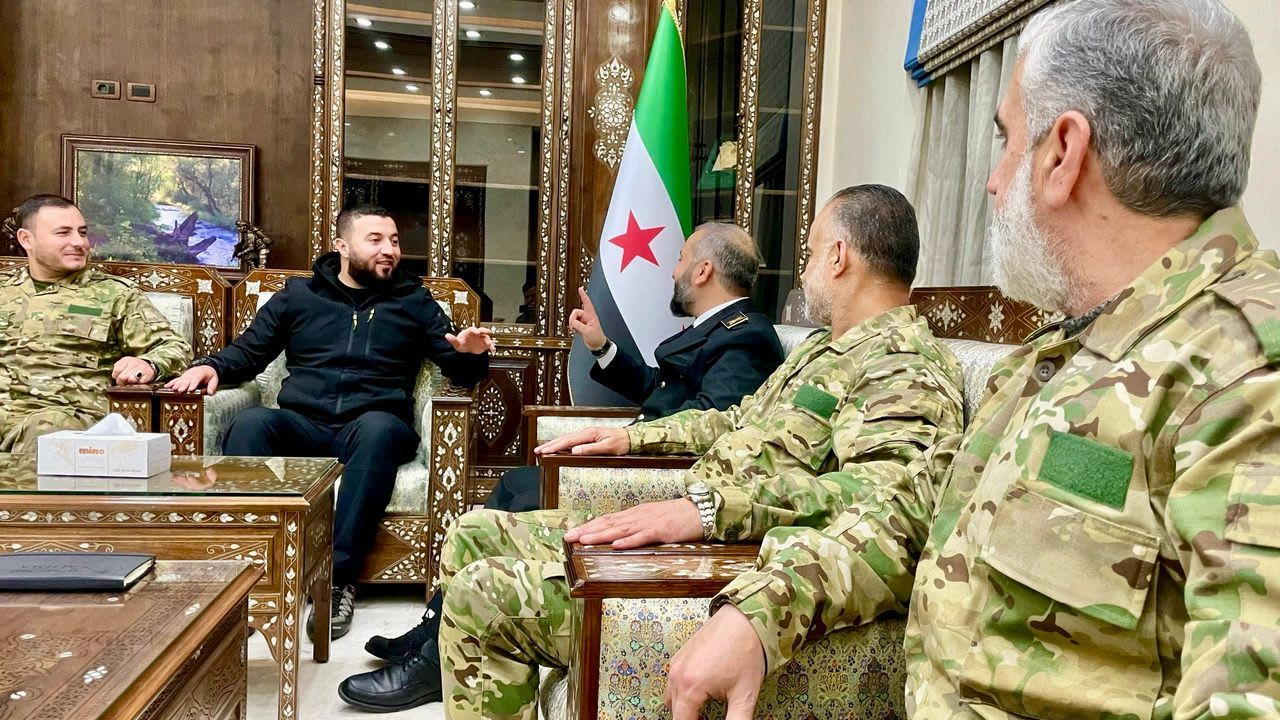Southern Syria: The heart of conflict and the hope for military unity.

The South: Strategic and Historical Importance
Since the events in Syria erupted, the southern region, especially Daraa, has been a focal point of conflict and political change. It is not just a battlefield but a historical center for political and military movements, a region of utmost strategic importance as the first line of defense for the Syrian state. The south has been highly susceptible to foreign interventions, making the unification of military forces there a necessary step to ensure national security and Syrian sovereignty.
Between Media Statements and Political Reality
One intriguing aspect of this meeting was the Defense Minister's denial of statements attributed to him by The Washington Post regarding the Eighth Brigade's refusal to integrate into the Ministry of Defense. Abu Qasra emphasized that the published information was inaccurate, stating that he was in contact with the newspaper to correct the misunderstanding. This incident highlights the importance of regulating international media discourse, as misleading coverage could undermine military reconciliation efforts and reintegration.
Military Integration: A Step towards Balance and Stability
The meeting included prominent military figures such as Colonel Naseem Abu Arra and the defected officer Mohammed Al-Qadri and Ali Bash. Discussions revolved around redistributing defected officers according to their specialties and restructuring fighters based on their combat capabilities. This is not merely an administrative reorganization but signifies a direction towards incorporating previous military forces within the official defense institution, contributing to unified military decision-making and reducing conflicts and defections.
Colonel Naseem Abu Arra described the meeting as "constructive and exemplary," highlighting the level of understanding achieved among the different parties. However, the symbolic message of this meeting is more important, reinforcing Daraa's position as a strong shield for Syria, not only militarily but also as a symbol of national unity against division and fragmentation projects.
Challenges and Prospects: Will the Experiment Succeed?
Despite the positive nature of this move, there are still existing challenges. Reintegrating former armed factions into one institution requires strong political will and genuine inclusion of various factions involved in the military scene. International and regional pressures may also impact the course of this process, especially given the ongoing external interventions.
Conclusion: Is the South the Key to the Solution?
What is happening in the south today could serve as a model for a broader solution encompassing all Syrian regions. The success of this step could indicate the possibility of achieving comprehensive stability, while its failure may reproduce chaos and divisions. The most important question remains: Does Damascus have sufficient tools to turn this integration into a starting point towards a more stable and unified Syria? Only the coming days will determine the answer.